History MakerWith History Maker, a digital instrument, students make their own history stories. Each story consists of a text, mutiple images or movies, and links to relevant websites. |
Albert van der Kaap, Enschede, a.vanderkaap@slo.nl
Website: http://historymaker.slo.nl
The history curriculum
In the nineties a political and public debate started
concerning the primary objectives of history education.
In 1997 the Dutch government installed a commission
which was given the task of making an inquiry into the
needs and expectations of society regarding history
education. The commission reported that modern history
education did no longer respond to the needs and
expectations of society: the curriculum was
characterized by a general lack of factual knowledge and
too much emphasis on teaching of skills. The commission
advised 'a new balance' between the teaching of facts
and the teaching of skills.
A second commission was installed to develop the
commission's proposals into concrete descriptions of new
curricula and exams for Dutch history education. This
second commission, which was called the 'De
Rooy'-commission after its president, Amsterdam
University Professor Piet de Rooy, reported the findings
in February 2001. The report 'Past, present and future'
met with general approval in politics and society
because it seemed to have closed the apparently
unbridgeable gap between 'facts' and 'skills' in history
education.
Historical consciousness
The commission
concluded that knowledge about the past should serve the
purpose of developing and promoting historical
consciousness in the way this has been defined by Jörn
Rüsen and other German scholars. Rüsen's definition
implies that historical consciousness is not the
equivalent of the simple demonstration of knowledge of
historical facts. Historical consciousness is
demonstrated in attitudes towards the present and the
future, using history as a background.
These considerations led to the conclusion by the De Rooy-commission that history education should provide students with the necessary instruments to demonstrate an educated historical consciousness; in other words: to show competent behaviour using their history education. These instruments were described in two categories:
-
Historical thinking: the skills that constitute the dealing with history in a more or less professional way; such as, the way in which facts are derived from evidence, the distinction of periods, continuity and change etc
-
A body of historical knowledge which can be used as a frame of reference.
Frame of reference
The creation of a frame of reference is not the more or
less automatic result of teaching periods in a
chronological order. More often than not, dealing with
topics and periods implies such a large quantity of
factual knowledge which is easily forgotten as soon as
the next topic or period comes into consideration. The
sheer vastness of historical knowledge available to us
is largely responsible for this situation. To create a
usable general frame of reference, it is necessary to
disregard a lot of this detailed knowledge and to
concentrate on general outlines. Vague notions of time,
such as ‘dark middle ages’ or ‘victorian age’ should be
utilized to create a coherent chronological system in
the hearts and minds of students.
Ten eras
Based on these considerations, the De Rooy-commission
created a system of ten periods which is meant to be
used as a common frame of reference throughout Dutch
history education for pupils from the age group of 8
year olds to the age group of 18 year olds. The ten
periods were given associative, easy to remember,
imaginary names, such as: the period of knights and
monks (= early middle ages, ca 500 tot 1000 AD), the
period of discoverers and reformers (= 16th
century), the period of citizens and steam engines (= 19th
century) or the period of the world wars (= first half
of the 20th century).
The system of periods should be taught in a concentric
curriculum throughout the school career of a student. In
this way, the system of periods will be gradually
‘filled up’ with notions which can give more and more
meaning and significance to the general historical frame
of reference. Factual knowledge of the periods is not a
purpose in itself; it is a necessary tool to be able to
judge new historical phenomena in the right perspective.
In this system teaching is, like before, much more about
European and World history than about the history of the
Netherlands.
The canon
More or less at the same time there was a public debate
on the Dutch identity. History should contribute, at
least partially towards answering the question 'who are
we'. In January 2005 the
Education Council, the most important advisory body to
the Ministry of Education stated that too little
attention had been paid to a ‘canon’ that expressed the
Dutch identity. According to the Education Council
essential elements in this respect are ‘those
valuable components of our culture and history that we
wish to pass on to later generations by means of
education. The canon is of importance to the whole of
society, not just to an elite group’. Such a canon
might undermine education’s socializing task, especially
considering the existing integration problems. With so
many children of foreign descent, the Council argued,
one had better see to it that Dutch culture and history
were transferred properly. These recommendations were,
of course, not to be dissociated from the social unrest
resulting from two prominent Dutchmen being murdered,
the politician Pim Fortuyn in May 2002 and the film
director Theo van Gogh in November 2004. The Dutch
nation was at risk of polarising at a fast rate: social
tensions were running high.
The Minister of Education at the time was convinced that
‘if young people in the Netherlands at least share
the core of the canon, this will further integration and
good citizenship’. With broad political and social
approval, the Minister decided to set up a committee
which was to look into the contents of the Dutch canon
and to develop a point of view on how to put it into
educational practice. The Minister’s decision was also
prompted by her conviction that young people today
lacked a proper knowledge of Dutch history and culture.
Not only had factual knowledge decreased;
what was also
found lacking more often than not, was a knowledge of
chronology as mentioned before.
The Van Oostrom Commission – so called after its
president Professor Frits van Oostrom of Utrecht
University finished its report with the 'Dutch canon' in
September 2006.
Probably in September 2009 , the canon will become
obligatory in both primary education and in lower
secondary education.
So, two committees have recently dealt with the future
of history education. The outcome is different. For the
De Rooy Commission historical awareness is the
key issue whereas for the Van Oostrom Committee it is
‘canonical’ knowledge.
Recently SLO,
the Dutch National Center for Curriculum Development,
has developed a curricular instrument combining both
concepts: the concept of ten eras, with the
characteristic aspects on one hand and the canon on the
other hand.
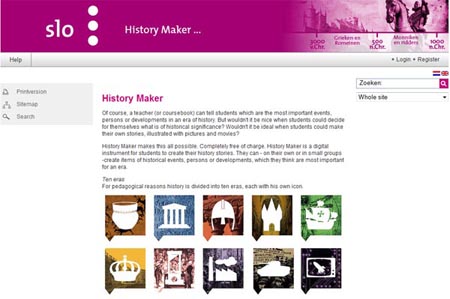
History Maker
Will the concept of the ten eras and the canon solve the
seemingly endless problem of students knowing nothing at
all about history? A problem that is, by the way, not a
typical Dutch problem. Not long ago an Australian
newspaper headed: they don't even no what Gallipoli is.
Perhaps is it not the curriculum or the content of the
textbooks that in the end determines whether history
education is effective in the long term, but rather the
way history is taught.
Of course, a teacher (or text book) can tell students
about the canon, about characteristic aspects. He or she
can tell them which are the most important events,
persons or developments in an era of history. But
wouldn't it be nice,or
wouldn't it be even better, when students could
decide for themselves what is of historical
significance? Wouldn't it be ideal when students could
make their own history stories, illustrated with
pictures and movies?
That was why I developed
History Maker. History Maker is
a digital instrument for students to create their own
history stories. They can - on their own or in small
groups -create items of historical events, persons or
developments, which they think are most important for an
era. So with History Maker students can create, as a
class, a World, European or Dutch canon of history, but
even so a local or regional canon.
How does History Maker work?
-
After the teacher registers, he receives a username
and password
-
After logging on he can create a project for a
class.
-
After doing so he wil receive two sets of usernames
and password for the students.
-
The first set is for students to make history
stories
-
The second set is for visitors of the website.This
second set prevents students in other parts of the
country to copy the work of fellow students.
History topics
Every history story, made by a student, consists of:
-
a text
-
images and links to (YouTube) movies with a maximum
of ten images/movies.
- links to relevant websites
Multiple items
Although there is no limit to the number of topics per
era, only ten of them will be visible for visitors of
the website. At first, the teacher can decide which
topics will be visible; by ordering them. After that, it
is up to the visitors, who may be
fellow students, friends or relatives, of the website to
be the judges of the importance of each topic. They can
rate every story from 1 tot 5.The topics with the
highest scores will be placed at the top of the list.
Collaboration
History Maker allows students to collaborate on their
history stories. They can, for example, work in small
groups on the same story (as in a wiki). This
collaboration will even be more intense and in depth
when students are asked to write reactions on topics
submitted by other students. With these reactions, they
can make analytical remarks or ask critical questions.
Students make their own canon of history
A great variety of assignments is possible. Some examples
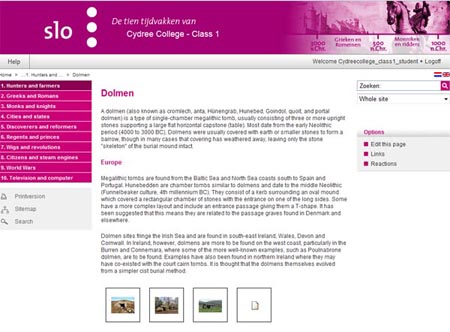
A canon
Step 1
Each student (or group of students) makes a story about
a development, an event or a person he thinks is
characteristic for that era. The story consists not only
of a text, but also of relevant pictures, short movies
and links. In the end, the teacher chooses the best ten
items to be displayed on the website.
Alternative version
The teacher discusses with the class which events and/or
persons are most characteristic for an era. Students (or
group of students) will make stories of the ten most
mentioned events or persons.
Step 2
After finishing his story each student writes a reaction
on two stories of fellow students. Possible reactions:
-
Think of one or more questions the author of the stories should answer in order to explain an aspect of his story more clearly
-
Advise your fellow student how he could improve his story
-
Comment the choices in maps, pictures and movies made by the fellow student
Step 3
Every student enhances his story using the comments of
his fellow students
Step 4
Students rate every story. The story with the highest
average score will be at the top of the list.
Students picture an era
Students write stories characterising an era in history.
Such an assignment might look like this:
The teacher will hand out/distribute every
characteristic of an era to a group of students with the
following assignment:
-
Picture in a short, clear text, the characteristic
aspect of the era the teacher has handed out to you
-
Look for an appropriate map and describe what you
see on the map
-
Look for at least four pictures that illustrate the
characteristic aspect. Write down why every picture
is a good illustration
-
Look for a picture of a person who fits the
characteristic aspect and note why you think so
-
Look for a picture of a work of art (painting,
object, book) that is characteristic for this aspect
of the era. Explain your choices.
- Look for a short movie (YouTube) and write a short introduction to the movie
The instrument in International projects
Margarita Limon, a Spanish history teacher, once asked
her students whether they thought students in
Latin-America would judge the travels of Colombus the
same way they did. So she asked them for example: 'Do
you think students in Latin America are taught the same
things about the discovery of America as you are? The
students answered: 'Yes, because it is an important
subject, or 'Yes, because although it happened a long
time ago, history doesn't change' or 'Yes, because they
have to pass the same exam and if they succeed, they
know what's in the book'. Therefore, students think
history is taught the same way all around the world and
the subjects studied are the same everywhere.
When students from different countries make a canon of
their own country's history or a canon of history in a
certain era, they can compare the choices they've made
with those from other students in other countries. They
will be challenged to discuss, online, the different
possible interpretations of history.
Resources
Wilschut, A.,
Historical
consciousness as an objective in Dutch history education,
http://www.ivgd.nl/Engels/consciousness.htm
Kurstjens, Huub,
The Dutch history canon: a never-ending debate?!,
http://histoforum.net/history/historycanon.htm
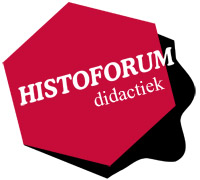
ten eras
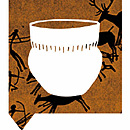
1. Era of hunters and
farmers
/ Prehistory
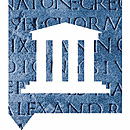
2. Era of Greeks and
Romans / Antiquity
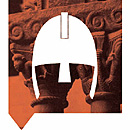
3. Era of monks and
knights / Early Middle
Ages
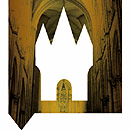
4. Era of cities and
states / High and
Late
Middle Ages
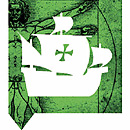
5. Era of discoverers
and reformers)/16th
century
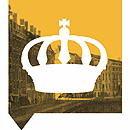
6. Era of regents and
princes/17th century
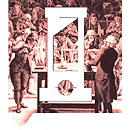
7. Era of wigs and
revolutions/ 18th
century
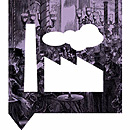
8. Era of citizens and
steam engines /
19th century
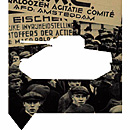
first half of the 20th
century
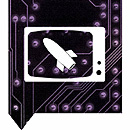
10. Era of television
and computer) /
second
half of 20th
century
History Maker
Website: http://historymaker.slo.nl
Copyright: Albert van der Kaap, 2009

